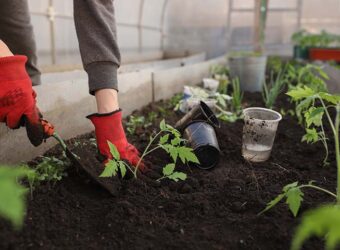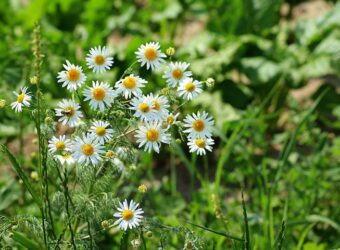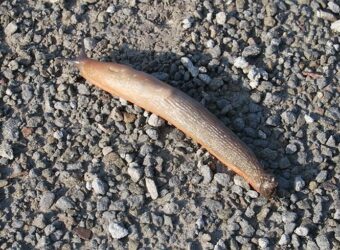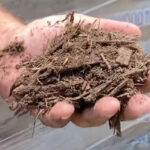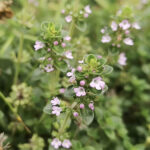When you add a small plot of cut flowers to your garden or put in some landscaping to increase your home’s curb appeal, you’re probably looking forward to colorful flowers. But have you thought about the best types of mulch for flower beds?
Adding mulch to your flower beds can help conserve moisture, keep weeds down, and improve your garden’s appearance. But since there are so many different types of mulch, determining the best mulch for your flower beds can be tricky!
To help you out, I’ll cover the benefits of adding mulch to flower beds, when to add mulch, and introduce you to some of the best types of mulch for flower gardens.
Is Mulch Good for Flower Beds?
Yes, mulch is good for flower beds! Applying mulch to your flower beds can provide numerous benefits that help flowers remain healthy and lessen the work you need to perform.
Want to know more about what I’m talking about? Then read more about the benefits of mulch below.
Conserve Moisture
While some flowers are drought tolerant, most require moderate moisture to remain healthy and produce blooms. But keeping the soil moist during the summer can be quite a challenge!
Where I live, water often evaporates from the top couple of inches of soil in a single day during the summer. That means I would need to water multiple times a day when plants are young and have shallow root systems.
However, evaporation occurs the most rapidly on bare soil. When you add mulch on top of a flower bed, you limit evaporation and the amount you need to water. That means mulch not only helps save water but it also saves you time.
Limit Weed Growth
One of my favorite benefits of mulching flower beds is limited weed growth. While adding mulch can take some time upfront, it can save hours of pulling weeds.
If you’re using an organic form of mulch like woodchips or straw, I recommend applying at least two inches of material to prevent weeds.
It’s important to note that while mulch can help limit the growth of many types of weeds, hardy perennial weeds like thistle, johnsongrass, and bindweed can grow through mulch. Therefore, you may still need to spend time pulling a few weeds from your garden beds.
Regulate Soil Temperature
Mulching your soil can help regulate the soil temperature during the summer and the winter. During the summer, mulch can prevent the sunlight from reading the soil surface, which helps keep the soil cool.
And during the winter, mulch can serve as a buffer between the soil and dry, cold air. Mulching can be especially useful for protecting perennial plants from the winter cold.
Add Organic Matter to Soil
Many types of mulch are organic materials. Woodchips, bark mulch, straw, and grass clippings are just a few examples.
When these materials break down, they increase the amount of organic matter in the soil. Increased soil organic matter provides many benefits, including improved aeration, drainage, and soil texture.
Soil organic matter can also help the soil hold onto nutrients like calcium and potassium until plants are ready to take them up. In other words, it helps increase the soil’s cation exchange capacity (CEC).
Finally, many beneficial soil microorganisms use organic matter as a food source. These microbes can help improve nutrient uptake, increase plant disease resistance, and improve soil texture.
When to Apply Mulch to Flower Beds
Once you decide to mulch your flower beds, the next step is determining when to apply the mulch. In general, you want to apply mulch right after planting annual plants or just after perennial plants emerge. If you are planting flowers from seed, wait until the seedlings are a few inches tall before mulching around them.
By applying mulch early, you can receive benefits like conserved soil moisture, limited weed growth, and regulated soil temperature.
You can also apply mulch before you plant your flowers. However, if you opt for this route, you should pull the mulch aside before planting. That’s because you want to plant your flowers into the soil rather than the mulch.
If you use an organic material like woodchips or straw, you should expect the material to decompose over time. While this means your soil will be loaded with more organic matter, it also means that the mulch won’t be very good at deterring weeds or conserving moisture.
Therefore, you should plant to re-mulch your flower beds about once a year. I like to reapply mulch in the spring after I’ve planted most flowers in the ground.
Items to Consider When Choosing Mulch for Flower Beds
After determining you want to mulch your garden flowers, it’s time to figure out what type of mulch you want to use. And with so many options available, this may be more difficult than you imagined!
To help you make a good choice, consider the following factors to determine the best mulch for your flower beds.
Material Availability
The first—and perhaps most important—factor is material availability. While many organic materials work well as mulch, not all of them may be available near you.
Rather than paying to have a mulching material shipped to you, check and see what materials are readily available in your area. Materials that are available locally will not only be easy to obtain, but they are often less expensive as well.
Garden Size
Next, consider the scale of your flower beds. If you have just a small garden or a few raised beds, bagged mulch might work well.
However, if you have a large flower garden or many flower beds, getting a truckload of mulch may make more sense. If that’s the case, you’ll want to see what mulch types are available through local landscape supply companies.
Material Weight
After you get your mulch, remember that you will need to spread it! If you have physical limitations or aren’t thrilled by spending an afternoon lifting heavy materials, consider using a lighter material as mulch.
The Best Types of Mulch for Flower Beds
Wondering what type of mulch is best for flower beds? In my opinion, there isn’t one best type of mulch. Instead, multiple materials can work well!
All of the following materials are great options for mulch in flower gardens.
Wood Mulch
Wood mulch is made from shredded or chipped wood. It is relatively slow to decompose and can last about a year. However, since wood mulch breaks down over time, you should expect to re-mulch your flower beds each spring.
If you decide to use wood mulch, you’ll have to narrow down exactly what type of mulch you’d like. The two main categories are natural (or undyed) mulch and colored mulch.
Natural mulch is just woodchips. It works great at suppressing weeds and keeping in moisture while providing a wild and unmanicured feel to your garden.
While you can purchase bagged woodchips in big box stores, you may also be able to locate free woodchips in your area. I’ve found that contacting local tree companies or using ChipDrop can lead to a free or low-cost pile of mulch.
You can also find specific types of natural wood mulch, including aromatic cedar mulch and pine mulch.
However, if you desire a more manicured style, you may want to use colored mulch. This material is made from wood that is shredded and then dyed. Common colors include red, brown, and black.
The best color mulch for flower beds is a personal preference. When determining what color mulch to apply, I recommend you look at your house color and choose a complementary mulch color.
Some people are concerned about the safety of colored mulch. Research suggests that most mulch is dyed with carbon-based or iron-based dyes, both of which are non-toxic. However, if colored mulch is made with treated wood, it can leach toxins into the soil.
Straw
Straw will help prevent weed growth, add organic matter to your flower bed, and help conserve moisture. It is also lightweight, which makes it easy to apply.
If you choose to use straw, only purchase straw that has not been sprayed with herbicides. Some herbicides can persist for months and leach into the soil after you apply straw as mulch. Once these herbicides are in the soil, they can stunt or even kill your flowers.
Purchasing straw bales is often the best option for home gardeners. These bales are easy to transport and spread.
One con of using straw as mulch is that it isn’t as aesthetically appealing as other options.
Living Groundcovers
If you are designing a flower bed, you can also use plants as a type of mulch! Low-growing, creeping plants can keep the soil covered while also providing a bit of interest to the garden. They can also help attract pollinators and hold soil in place.
Some plants that work well as living mulches include Dutch white clover, creeping thyme, creeping phlox, and stonecrop.
Landscape Fabric
If you don’t want to complete the work of spreading mulch or are growing quick-growing annuals for cut flowers, landscape fabric can work well as a mulch. I like to use landscape fabric when growing annual cut flowers like zinnias, cosmos, and calendula.
While most types of mulch can be applied after your flowers are in the ground, you should apply landscape fabric prior to planting your flowers.
Before you apply your landscape fabric on the soil, you should burn holes where plants will go. I like to have a few pieces of fabric on hand with various plant spacing. For example, I have one piece with holes spaced every 12 inches and another piece with holes spaced every six inches.
I find that creating a plywood template makes it easier to burn holes in the fabric. Simply cut holes in the wood and the proper spacing, then set the board on top of the fabric. Make sure the board is firm against the fabric, then use a propane torch to burn holes in the fabric.
Once your fabric is ready, lay it on your flower bed and secure it to the ground with landscape staples.
Frequently Asked Questions
Is Cedar Mulch Good for Flower Beds?
Cedar mulch is a suitable mulch for flower beds. It will help conserve moisture and prevent weeds while also adding a pleasant fragrance to your garden.
Will Mulch Kill Grass in Flower Beds?
A thick layer of cardboard, wood chips, and other types of mulch can kill grass in flower beds. However, rhizomatous grasses may grow through mulch, especially if the mulch is thin.
How Deep Should I Mulch Flower Beds?
If you are using wood mulch on flower beds, apply about two inches of mulch. This will help conserve soil moisture while also preventing weed growth.
Is It Okay to Use Colored Mulch on Flower Beds?
Colored mulch refers to woodchips that are dyed red, black, brown, or other colors. Although the dyes are generally free from toxins, dyed mulch may be made from treated scrap wood. Therefore, you should investigate the source of the colored mulch if you are concerned about adding toxins to your garden.
Is Rubber Mulch Good for Flower Beds?
Rubber mulch can be a long-lasting option for flower beds. However, it will not add organic matter to the soil and can also leach toxins into the ground.
Can I Use Rocks as Mulch for Flower Beds?
You can use rocks to mulch for flower beds. However, remember that rocks are typically expensive and difficult to spread.
Learn More About Mulch
If you’re still not sure about what type of mulch to apply to your flower beds, there’s no harm in trying a few to see what material you like best.
And if you’re looking to mulch other areas of your garden, check out the best types of mulch for vegetable gardens, and the best types of mulch for tomato plants.

